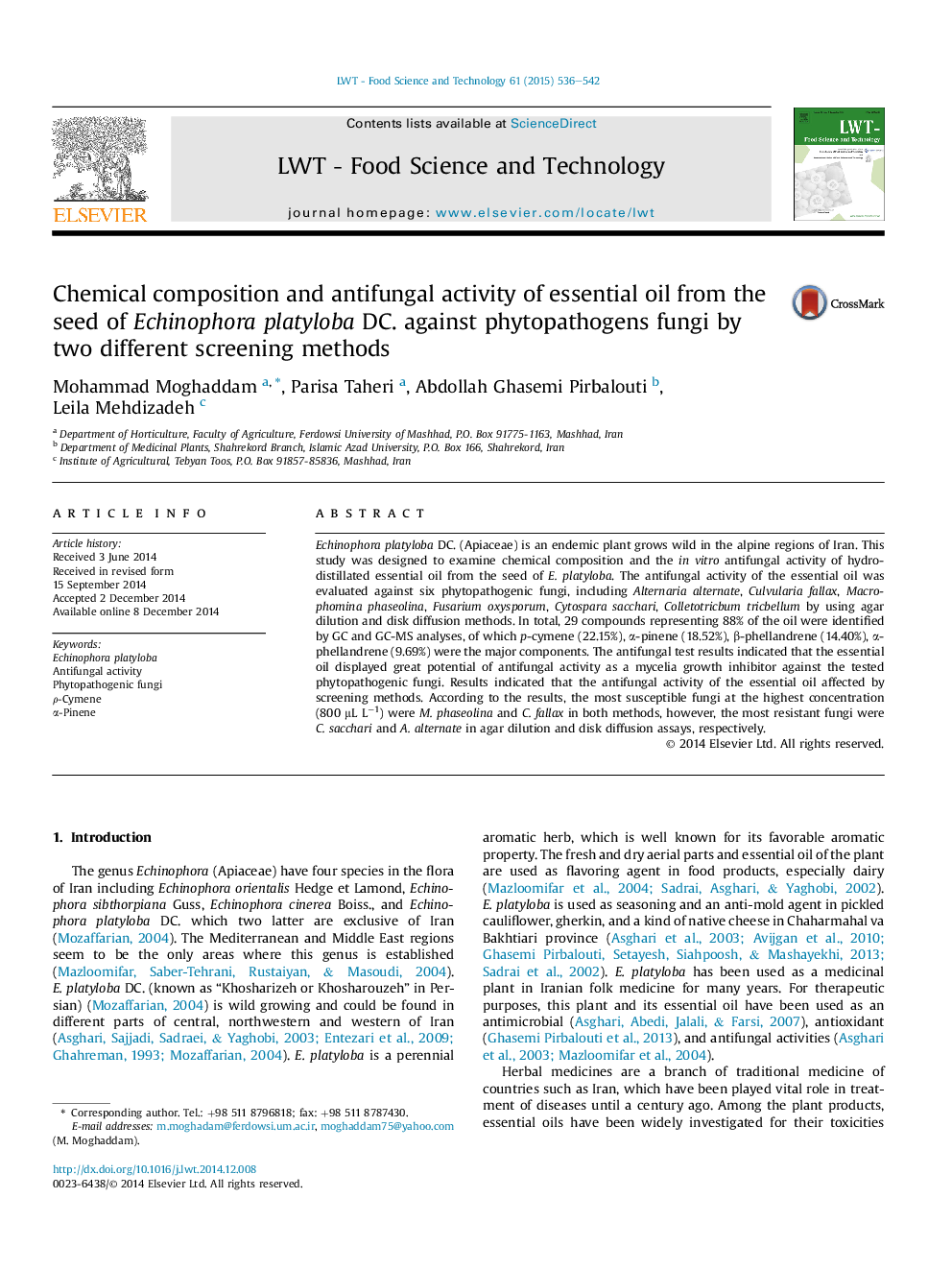| کد مقاله | کد نشریه | سال انتشار | مقاله انگلیسی | نسخه تمام متن |
|---|---|---|---|---|
| 6401203 | 1330879 | 2015 | 7 صفحه PDF | دانلود رایگان |

- Essential oil from the seed of E. platyloba was analyzed by GC and GC/MS.
- Monoterpene hydrocarbons were the main chemical group of the essential oil of E. platyloba seed.
- The essential oil from E. platyloba exhibited potent antifungal activity.
- The antifungal activity of the E. platyloba seed oil affected by screening methods.
Echinophora platyloba DC. (Apiaceae) is an endemic plant grows wild in the alpine regions of Iran. This study was designed to examine chemical composition and the in vitro antifungal activity of hydrodistillated essential oil from the seed of E. platyloba. The antifungal activity of the essential oil was evaluated against six phytopathogenic fungi, including Alternaria alternate, Culvularia fallax, Macrophomina phaseolina, Fusarium oxysporum, Cytospara sacchari, Colletotricbum tricbellum by using agar dilution and disk diffusion methods. In total, 29 compounds representing 88% of the oil were identified by GC and GC-MS analyses, of which p-cymene (22.15%), α-pinene (18.52%), β-phellandrene (14.40%), α-phellandrene (9.69%) were the major components. The antifungal test results indicated that the essential oil displayed great potential of antifungal activity as a mycelia growth inhibitor against the tested phytopathogenic fungi. Results indicated that the antifungal activity of the essential oil affected by screening methods. According to the results, the most susceptible fungi at the highest concentration (800 μL Lâ1) were M. phaseolina and C. fallax in both methods, however, the most resistant fungi were C. sacchari and A. alternate in agar dilution and disk diffusion assays, respectively.
Journal: LWT - Food Science and Technology - Volume 61, Issue 2, May 2015, Pages 536-542